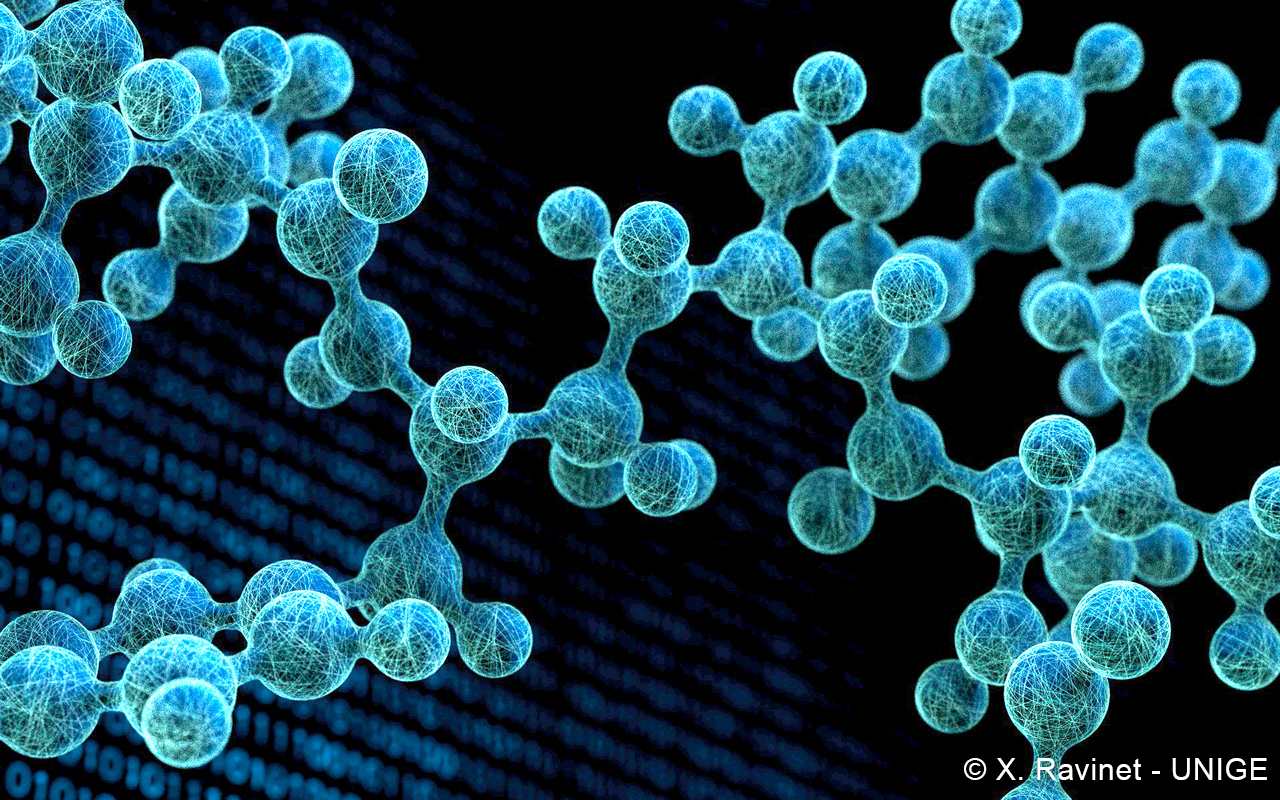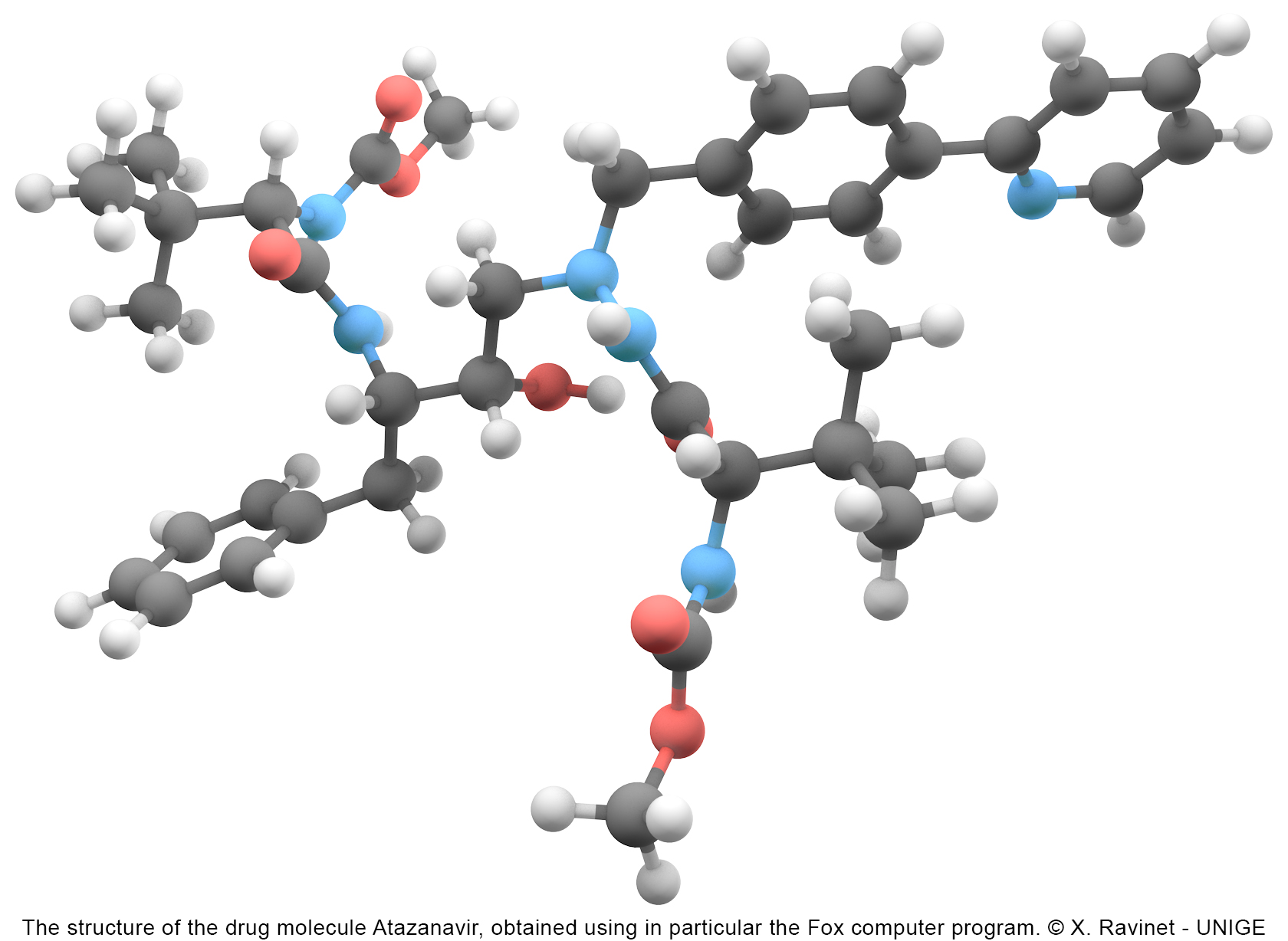Crystallography helps to combat the SARS-CoV-2 virus
The crystal structure of a drug tested against Covid-19 was solved using Fox computer program, developed in the Laboratory of crystallography at the Department of quantum matter physics (DQMP), UNIGE.

Recently, a team of researchers from the Illinois Institute of Technology, North Central College and the International Centre for Diffraction Data (ICDD) has reported the room-temperature crystal structure of Atazanavir - a commercially available drug that could act on virus proteins of SARS-CoV-2, causing COVID-19.
The crystal structure - the arrangement of atoms in a crystal - has been solved using X-ray diffraction data measured at the Argonne synchrotron APS with the computer program Fox developed in the Laboratory of crystallography, DQMP, within a SNSF project a few years ago.
This structure of Atazanavir gives the distances and angles between atoms with very high precision, enabling researchers to better understand how this molecule can attack the SARS-CoV-2 virus.
The relatively complex crystal structure of this drug solved from powder diffraction data is a major achievement on its own, given the number of atoms in the molecule. This is amplified by its real and contextual importance.

The article "Crystal structure of Atazanavir, C38H52N6O7" will be published in June 2020 in the Powder Diffraction Journal, but the preprint is being made available by the ICDD so that it can be used to assist researchers working on a solution for treatment of COVID-19
Contact : Prof. Radovan Cerny
June 10, 20202020
